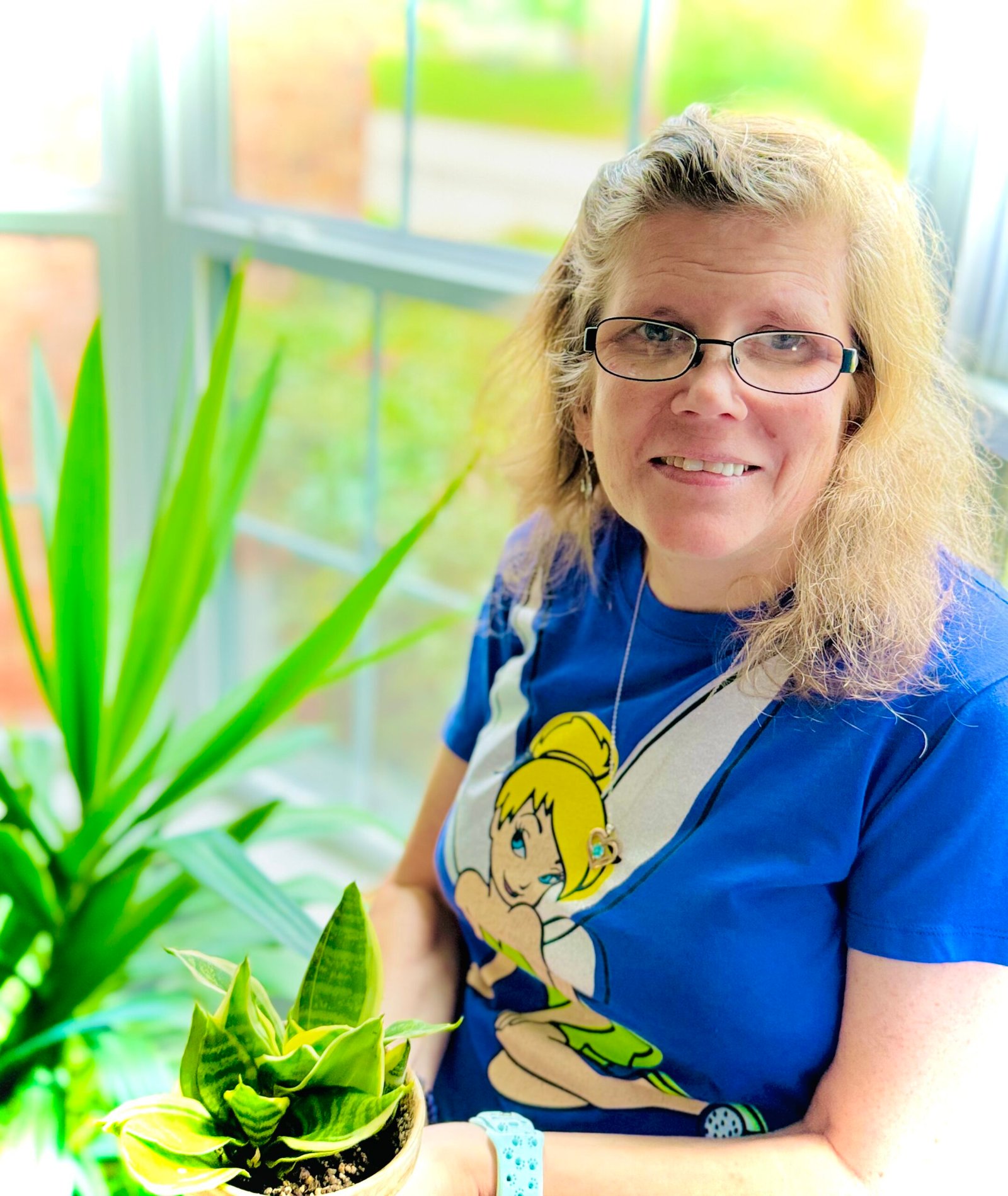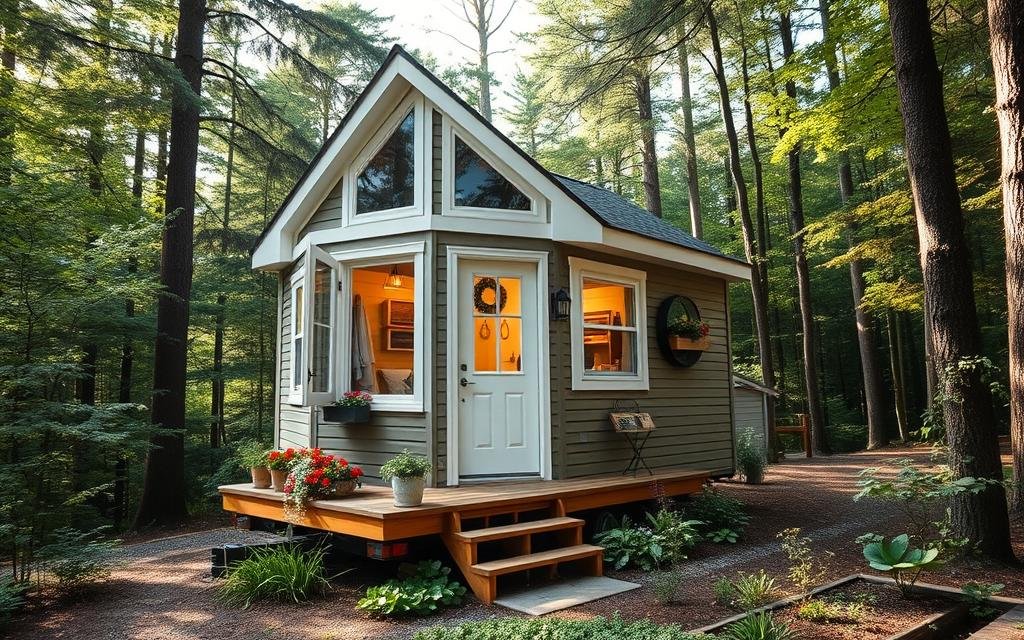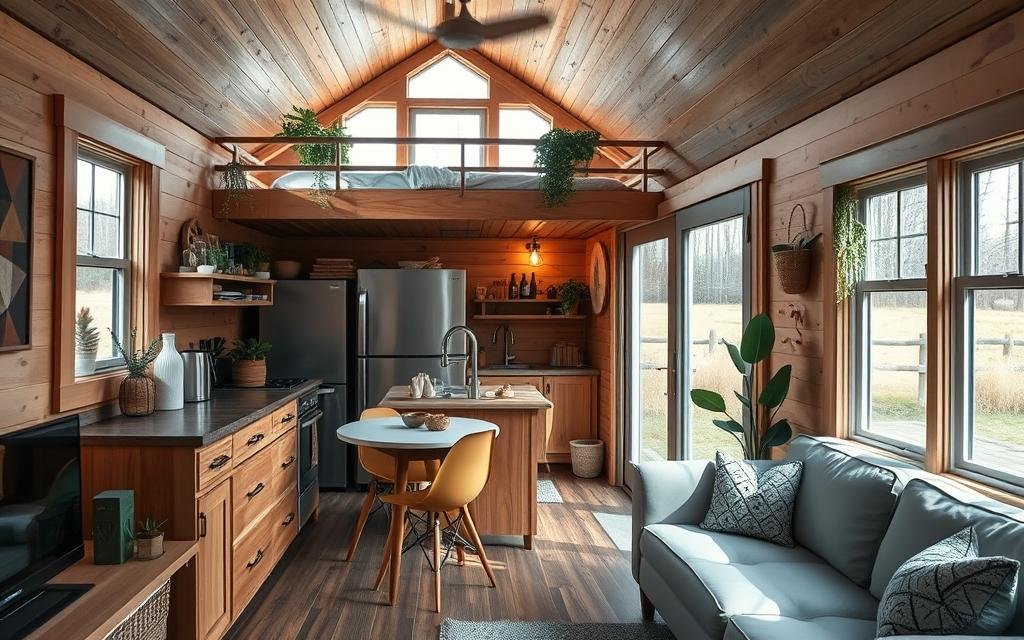In an era where conventional housing costs continue to escalate, compact living spaces, often referred to as tiny houses, have emerged as a compelling alternative. These diminutive dwellings, typically under 400 square feet, present an intriguing proposition for those seeking affordability and a minimalist lifestyle.
However, the question of their financial viability as a long-term investment—Is a Tiny House a Sound Financial Investment?—remains a subject of considerable debate. While their initial purchase price, often around $45,000, appears remarkably attractive—nearly 90% cheaper than the median cost of traditional homes—a deeper examination reveals a more nuanced financial landscape.
When considering whether a tiny house is a viable option, many ponder: Is a Tiny House a Sound Financial Investment?
The true long-term value of a tiny house is intricately tied to a multitude of factors, including its location, mobility, and the prevailing market demand.
As you think about your options, you may ask yourself, Is a Tiny House a Sound Financial Investment? This is a question worth exploring.
Unlike traditional real estate, which historically appreciates over time and builds equity for homeowners, mobile tiny homes built on wheels often face a depreciation trajectory akin to recreational vehicles (RVs). This can result in a significant loss of value, with some units depreciating by as much as 30% within their first five years.
It’s important to evaluate if Is a Tiny House a Sound Financial Investment? meets your financial goals.
Many individuals are left wondering: Is a Tiny House a Sound Financial Investment? Understanding the answer is key.
The inquiry remains: Is a Tiny House a Sound Financial Investment? Consider the broader implications.
In deciding, one must reflect on the question: Is a Tiny House a Sound Financial Investment?
While tiny houses on fixed foundations may offer a greater degree of stability and potential for appreciation, they introduce complexities related to zoning laws and land ownership, which can significantly impact the overall cost calculation and investment potential.
Furthermore, prospective tiny house owners must account for a range of often-overlooked hidden expenses that can impact profitability. These recurring costs can include land leases, utility hookups, and specialized insurance, all of which add to the ongoing financial burden.
The maintenance of custom features, such as solar panels or creatively designed lofted spaces, can also strain budgets. Therefore, a comprehensive financial assessment necessitates a careful consideration of these factors, alongside any potential for rental income or future resale opportunities.
Table of Contents
Key Takeaways
- Significant Initial Cost Savings: Compact dwellings boast initial costs that are, on average, 88% lower than those of standard homes, making them an accessible entry point into homeownership for many.
- Depreciation vs. Appreciation: Mobile tiny homes, particularly those on wheels, tend to depreciate in value much like vehicles, a stark contrast to the typical appreciation seen in fixed-property real estate.
- Ongoing Financial Commitments: Ownership involves various recurring expenses, including land fees, necessary permits, and potential costs associated with custom upgrades and specialized maintenance.
- Limited Equity Growth: Compared to traditional real estate, the potential for equity growth in tiny homes is considerably more constrained, impacting their long-term investment appeal.
- Market Dynamics and Regulations: The demand for tiny homes, along with the regulatory environment governing their placement and use, can vary significantly by geographical region, influencing their financial outlook.
Overview of the Tiny House Movement
The rising question for many is: Is a Tiny House a Sound Financial Investment? Understanding this can guide your decision.
For those considering this lifestyle change, a critical question arises: Is a Tiny House a Sound Financial Investment?
The tiny house movement represents a significant cultural shift in modern housing priorities, moving away from the traditional emphasis on expansive living spaces towards a philosophy that champions efficiency and intentionality.
Ultimately, the question of value remains: Is a Tiny House a Sound Financial Investment?
These structures, defined by international building codes as having floor plans capped at 400 square feet, are more than just small homes; they embody a deliberate rejection of consumerism and a conscious embrace of a more purposeful lifestyle.
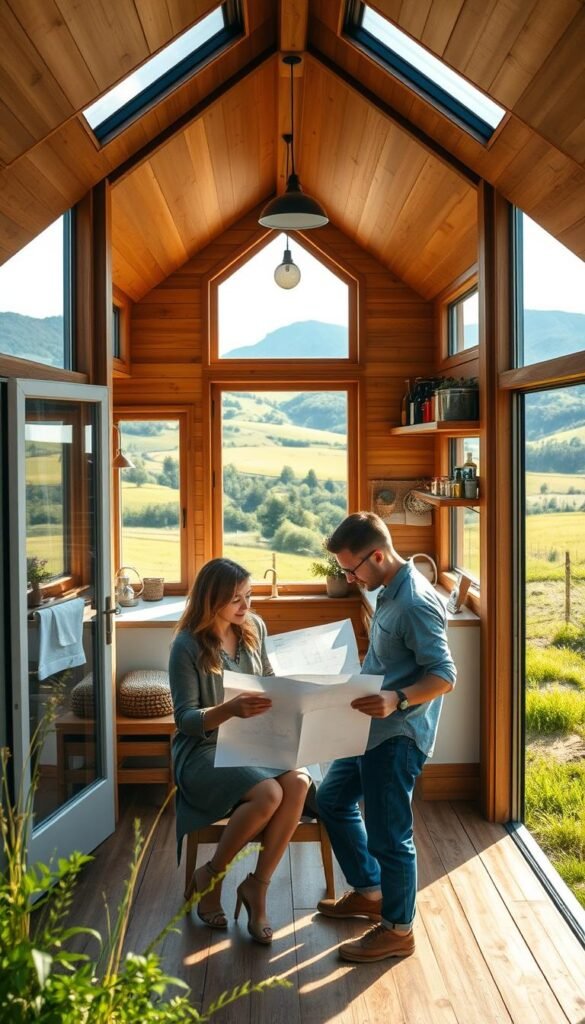
What Exactly Is a Tiny House?
While officially classified as dwellings under 400 square feet, the average tiny home typically measures around 225 square feet—a size that can be surprisingly smaller than some walk-in closets found in conventional houses.
To maximize functionality within such compact dimensions, builders ingeniously employ vertical designs and incorporate multi-purpose furniture. This innovative approach allows for the creation of fully functional kitchens, comfortable sleeping lofts, and efficient storage solutions.
A key distinction from recreational vehicles (RVs) is that many tiny home models are equipped with permanent appliances and are constructed to comply with residential safety standards, underscoring their status as legitimate, albeit miniature, residences.
The Rise of the Minimalist Lifestyle
The burgeoning popularity of the tiny house trend is largely propelled by three interconnected factors, each contributing to the rise of a minimalist lifestyle:
- Financial Freedom: A significant driver for many is the pursuit of financial liberation. A compelling statistic reveals that 68% of tiny home residents are entirely free from mortgage debt, a stark contrast to the financial burdens often associated with traditional homeownership.
- Environmental Consciousness: Growing environmental concerns also play a pivotal role. Compact living spaces inherently boast a smaller ecological footprint, utilizing approximately 45% less energy than average homes. This aligns with a broader societal push towards sustainable living practices.
- Cultural Momentum: The movement has gained considerable cultural traction, partly fueled by the visibility provided by reality television series that showcase the creative and innovative solutions employed in small-space living. These programs have demystified tiny homes and highlighted their potential.
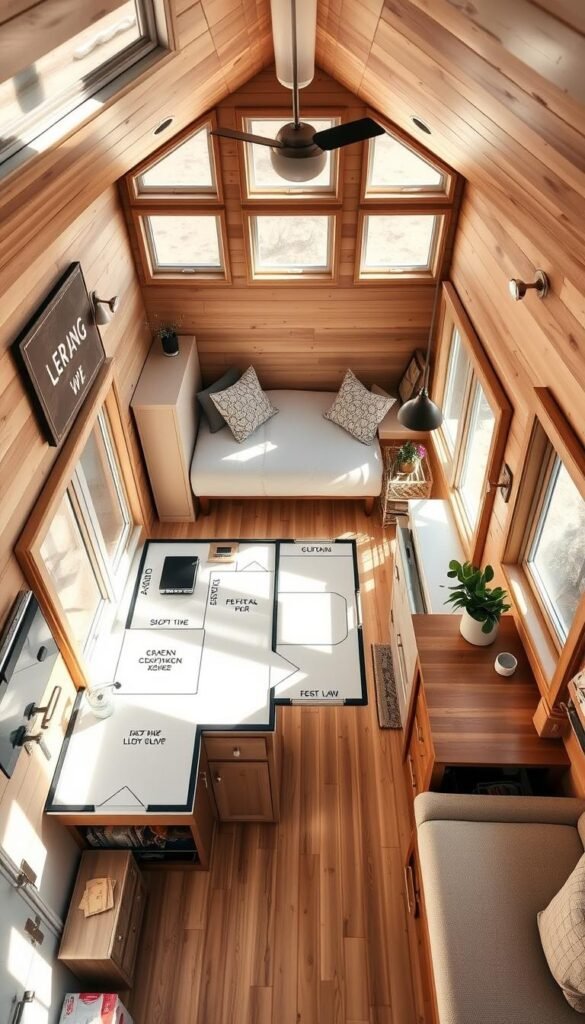
This lifestyle resonates deeply with a diverse demographic, from young professionals seeking to reduce their possessions and enhance their mobility to retirees looking for a simpler, more manageable way of life.
While urban zoning challenges continue to present hurdles, an increasing number of rural communities are recognizing the value of these dwellings as viable and affordable housing alternatives, further solidifying the tiny house movement’s place in the evolving landscape of residential living.
Financial Analysis: Is a Tiny House a Sound Financial Investment?
Evaluating the financial prudence of investing in compact dwellings necessitates a thorough understanding of both the initial upfront expenses and their capacity for long-term value retention.
While the seemingly attractive initial price tags of tiny homes often draw in prospective buyers, the realities of customization choices and inherent depreciation patterns can frequently catch them by surprise.
This section delves into the critical financial aspects of tiny home ownership, exploring the numbers that underpin this unique housing option.
Investment Cost Breakdown and Customizations
The journey into tiny home ownership typically begins with base models, which can be acquired for as little as $30,000.
These foundational units generally include essential components such as basic plumbing and insulation, providing a habitable shell.
However, it is crucial for buyers to recognize that these base prices often represent only a starting point.
The desire for personalized features and enhanced comfort frequently leads to the inclusion of premium upgrades, which can rapidly escalate the overall budget.
A recent survey highlighted this trend, revealing that a significant 63% of tiny home owners ultimately exceed their initial cost estimates by an average of 40%.
This overage is often attributed to the addition of desirable, yet costly, features.
- High-end kitchen appliances: Upgrading from standard fixtures to more sophisticated and efficient kitchen equipment.
- Retractable roof decks: Innovative architectural additions that enhance outdoor living space and aesthetic appeal.
- Smart home automation systems: Integrating technology for enhanced convenience, security, and energy management.
These customizations, while improving livability and personal satisfaction, directly impact the total investment and can influence the home’s eventual resale value.
Resale Value and Depreciation Factors
One of the most critical financial considerations for tiny homes, particularly portable units, is their susceptibility to depreciation. These units often experience a significant annual loss in value, ranging from 18% to 25%, a rate that closely mirrors the depreciation observed in RVs. While tiny homes built on fixed foundations tend to perform marginally better in terms of value retention, their appreciation still lags considerably behind that of traditional homes, which typically see an average yearly appreciation of 3.9%. The market for tiny homes presents several unique challenges that contribute to these depreciation patterns:
- Limited Buyer Pools for Niche Designs: The highly customized nature of many tiny homes means they appeal to a smaller, more specific segment of the housing market, making resale more challenging.
- Zoning Restrictions Reducing Land Options: Restrictive zoning laws in many areas limit where tiny homes can be legally placed, thereby reducing the pool of potential buyers who have suitable land.
- Higher Financing Rates for Non-Traditional Dwellings: Lenders often perceive tiny homes as higher risk, leading to less favorable financing options and higher interest rates, which can deter potential buyers.
In summary, evaluating if Is a Tiny House a Sound Financial Investment? is essential.
A study conducted in Wisconsin further underscored these challenges, indicating that customized tiny units took an average of 47% longer to sell compared to standard models.
Thus, potential buyers must ask themselves: Is a Tiny House a Sound Financial Investment?
Moreover, these sales frequently necessitated price reductions exceeding 22% of the asking price, highlighting the financial risks associated with over-customization and the niche market for these dwellings.
As with any property, the fundamental question is: Is a Tiny House a Sound Financial Investment?
Pros and Cons of Tiny House Living
Embracing compact dwellings involves a delicate balance between the allure of financial freedom and the practical compromises inherent in such a lifestyle.
These structures fundamentally challenge conventional housing norms, offering a unique set of benefits while simultaneously demanding significant adjustments to one’s daily routines and expectations.
Advantages: Affordability and Minimalism
For those embracing the movement, the inquiry remains: Is a Tiny House a Sound Financial Investment?
One of the most compelling advantages of tiny house living is the dramatic reduction in monthly expenses. When residing in a space under 400 square feet, utility bills can plummet, averaging 65% lower than those for standard homes. In regions with distinct seasons, heating costs alone can be cut by an impressive 78%. Beyond the operational savings, a substantial number of tiny home owners achieve complete liberation from mortgage debt, with 82% of these compact residences costing less than the typical down payment required for a traditional house.
The minimalist philosophy central to tiny living also fosters a profound shift in consumption habits. Residents frequently report a 40% decrease in impulse purchases after transitioning to these smaller spaces. This intentional approach to consumption often translates into significantly increased savings rates and a notable reduction in financial stress, allowing individuals to allocate resources towards experiences rather than material possessions.
Disadvantages: Limited Space and Financing Challenges
Despite the numerous benefits, tiny house living comes with its own set of practical limitations, primarily centered around space constraints.
Storage, for instance, often requires creative and sometimes external solutions, with 47% of owners resorting to renting off-site units for seasonal items or overflow.
The compact nature of these homes also makes hosting guests a considerable challenge, as most floor plans are designed to comfortably accommodate a maximum of two adults.
Furthermore, while custom furniture can optimize space, it often comes at an additional cost, averaging around $2,300 for specialized space-saving installations.
Financing remains a significant hurdle within the tiny house market. Only a limited number of lenders, approximately 22%, offer specialized loans tailored to these unique dwellings.
This forces a large proportion of buyers, around 68%, to rely on high-interest personal credit, which can negate some of the initial cost savings.
Compounding these financial complexities are the persistent zoning laws in 31 states that continue to prohibit full-time occupancy of tiny homes on private land, restricting placement options and potential for permanent residency.
Impact on Long-Term Lifestyle and Flexibility
Tiny house living is generally best suited for single occupants or child-free couples, given the inherent space limitations.
As residents age, accessibility can become a significant concern, with 89% of older tiny home dwellers requiring modifications within eight years to accommodate changing mobility needs.
However, mobile tiny units offer unparalleled relocation flexibility, a distinct advantage for individuals or families who anticipate job changes or desire to adapt to different climates.
While the shared experience of minimalism can often strengthen relationship dynamics, it is worth noting that 34% of couples report an increase in conflict during the initial adjustment period.
Ultimately, successful adopters of the tiny house lifestyle often find creative ways to offset interior constraints by prioritizing outdoor spaces and actively engaging with community resources.
Comparing Tiny Homes to Traditional Home Investments
When assessing housing investments, the sheer scale of the property plays a pivotal role in determining financial outcomes.
In the end, it circles back to the question: Is a Tiny House a Sound Financial Investment?
Full-size properties have long been the cornerstone of wealth-building strategies for many, while their compact alternatives, tiny homes, cater to a more niche set of priorities.
This section meticulously examines how these two distinct housing options measure up across several critical financial categories, providing a clearer picture for prospective homeowners and investors.
Affordability and Mortgage Considerations
Traditional homes typically demand a median investment of approximately $392,450, a figure that stands in stark contrast to the significantly lower cost of compact dwellings, which are nearly nine times more affordable upfront. While this substantial difference in initial cost makes smaller units highly attractive, the path to financing them is often fraught with complications. A significant barrier exists in the lending landscape: only about 12% of lenders are willing to offer standard mortgages for movable tiny structures.
This scarcity of conventional financing options often compels a large majority of buyers, around 78%, to resort to personal loans. These loans, while accessible, typically come with considerably higher interest rates, ranging from 9% to 15%, which can significantly erode the initial cost advantage of a tiny home over its lifespan.
Equity Building and Market Appreciation
One of the most compelling arguments for investing in conventional real estate is its historical tendency to appreciate in value.
On average, traditional homes experience an annual value increase of 3.9%, which translates into a substantial $11,500 in yearly equity for a median-priced property.
This consistent growth contributes significantly to a homeowner’s net worth over time.
In stark contrast, compact units largely lack this crucial growth potential.
Mobile tiny homes, in particular, face a challenging reality, depreciating by an average of 22% over a five-year period.
Investors often ponder: Is a Tiny House a Sound Financial Investment? The answer can vary greatly.
While tiny homes built on fixed foundations may exhibit a modest appreciation of around 1.2%, they still contend with a limited buyer demand that hinders significant value growth.
The resale markets for these two housing types also diverge sharply. Traditional homes typically sell within a relatively short timeframe, often within 45 days in most regions, indicating a robust and liquid market. Niche designs, such as highly customized tiny homes, however, can languish on the market for six months or more, reflecting their specialized appeal. While the inherent location flexibility of movable tiny units can be an advantage, a significant proportion, 81%, are ultimately sold below their initial cost. This often stems from a mismatch between the seller’s specific customizations and the broader market’s preferences, underscoring the financial risk associated with highly personalized tiny home designs.
As you reflect on your choices, consider: Is a Tiny House a Sound Financial Investment?
Many individuals will ask: Is a Tiny House a Sound Financial Investment? The answer hinges on various factors.
Market Trends and Real Estate Considerations for Tiny Homes
The contemporary housing landscape is undergoing a significant transformation, driven by evolving consumer priorities that increasingly lean towards sustainability, flexibility, and affordability.
Another critical aspect to consider is: Is a Tiny House a Sound Financial Investment?
Within this shifting paradigm, compact dwellings have carved out a notable niche, now accounting for approximately 13% of all alternative housing searches.
In discussions about housing, one major topic is: Is a Tiny House a Sound Financial Investment?
This growing interest is a clear reflection of changing consumer values, with environmental awareness and the escalating costs of urban living serving as primary catalysts for the tiny house movement.
Ultimately, potential buyers need to assess: Is a Tiny House a Sound Financial Investment?
All these factors lead back to one essential question: Is a Tiny House a Sound Financial Investment?
However, it is important to acknowledge that legal complexities and regulatory hurdles continue to temper the pace of its widespread adoption and growth.
As trends evolve, so does the inquiry: Is a Tiny House a Sound Financial Investment?
Current Demand and Sustainable Living Trends
The demographic leading the charge in the tiny house market is predominantly composed of Millennials and Gen Z buyers.
A compelling 61% of these individuals cite environmental impact as their primary motivation for choosing a tiny home.
This preference is well-founded, as these units inherently boast a significantly reduced ecological footprint.
For instance, they typically utilize 37% less lumber in their construction and require 82% fewer HVAC resources compared to standard homes.
The integration of features such as solar-ready designs and efficient rainwater harvesting systems further enhances their appeal to environmentally conscious consumers, aligning perfectly with the broader global push towards sustainable living practices.
This strong alignment with eco-friendly values positions tiny homes as a forward-thinking solution for a generation increasingly concerned with climate change and resource conservation.
